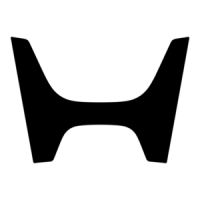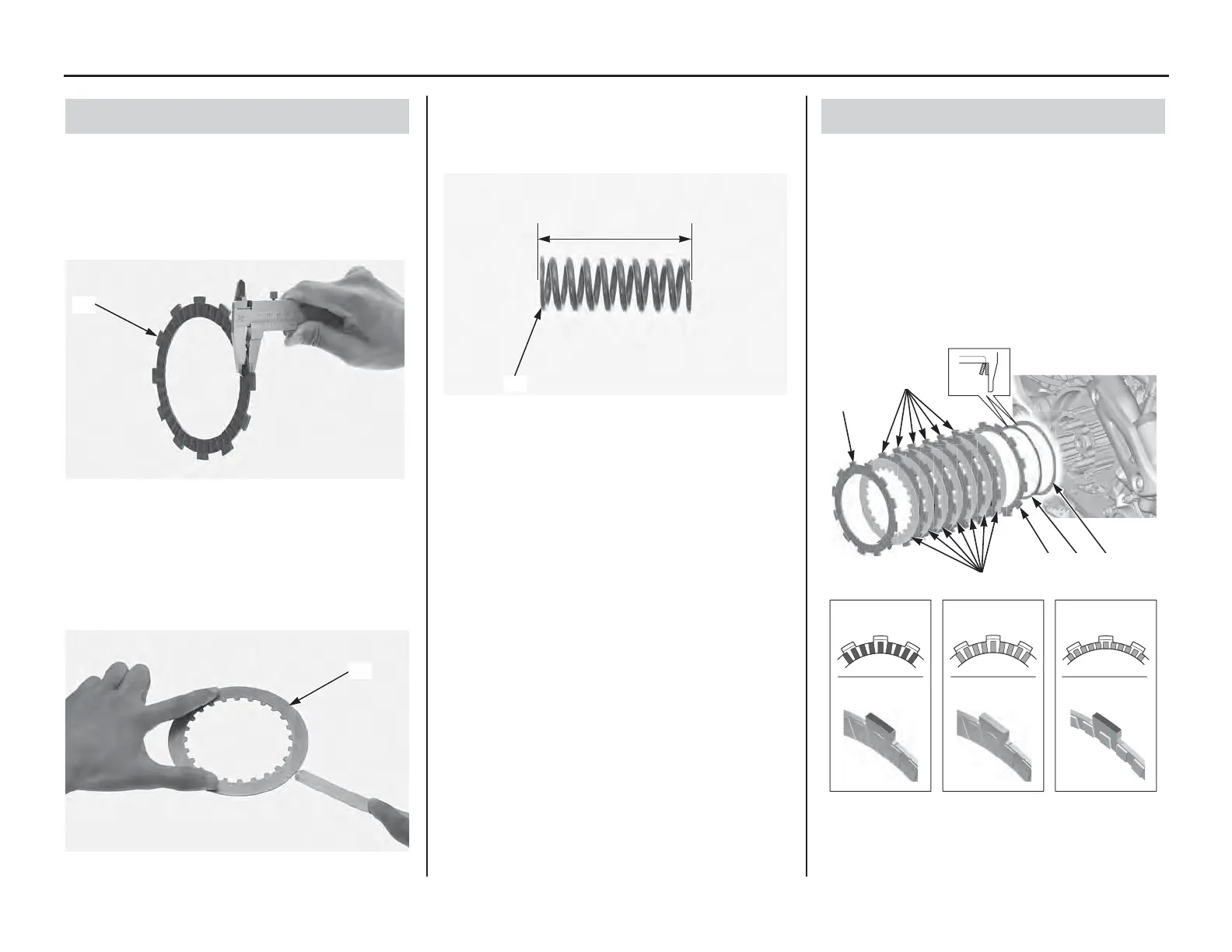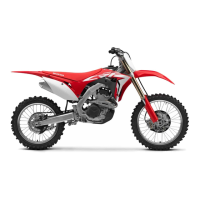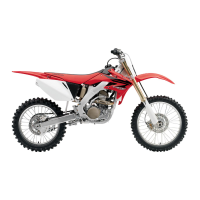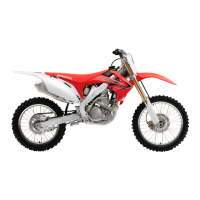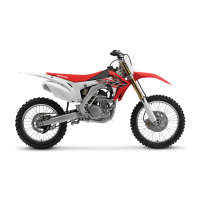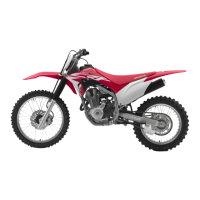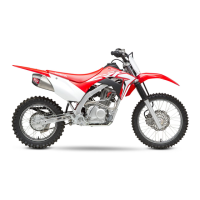Clutch System
(cont’d)
Servicing Your Honda 65
• Replace the clutch discs (1) if they show signs of
scoring or discoloration.
Measure the thickness of each clutch disc.
Service Limit: 0.112 in (2.85 mm)
Replace the clutch discs and clutch plates as a
set.
• Check the clutch plates (2) for excessive
warpage or discoloration.
Check the plate warpage on a surface plate using
a feeler gauge.
Service Limit: 0.004 in (0.10 mm)
Replace the clutch discs and plates as a set.
• Check the clutch springs (3) for wear or damage.
Measure the free length of each clutch spring.
Service Limit: 1.967 in (49.96 mm)
Replace the clutch springs as a set.
• If you feel the clutch slippage when replacing the
clutch discs and plates, replace the clutch
springs.
1. Install the spring seat (1) and judder spring (2)
onto the clutch center as shown.
Coat the clutch discs with engine oil.
2. Install the clutch disc A (larger I.D. disc and
green painted to the clutch disc lug surface) (3)
onto the clutch outer.
Stack the seven clutch plates (4), six clutch
discs B (5) alternately as shown.
Install the clutch disc C (6) (black painted to
the clutch disc lug surface).
Clutch Disc/Plate/Spring Inspection
(1) clutch disc
(2) clutch plate
(1)
(2)
(3) clutch spring
(3)
Clutch Disc/Plate Installation
(1) spring seat (4) clutch plates
(2) judder spring (5) clutch discs B
(3) clutch disc A (6) clutch disc C
(6)
paint: black
paint: none
disc A
(3) (2) (1)
(5)
(4)
disc Bdisc C
paint: green
(6) (5) (3)
